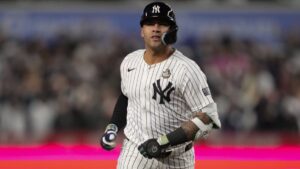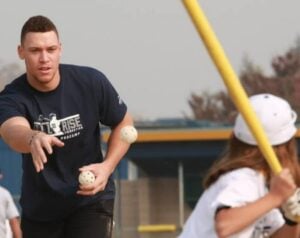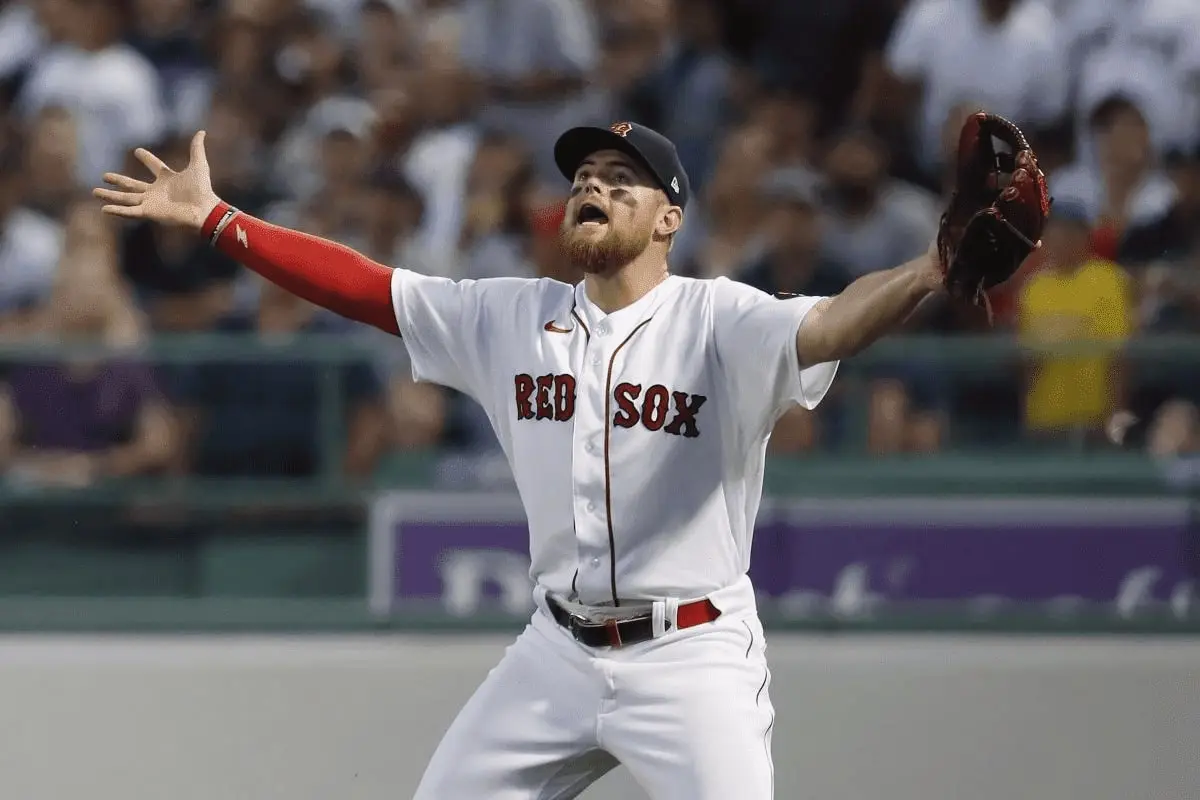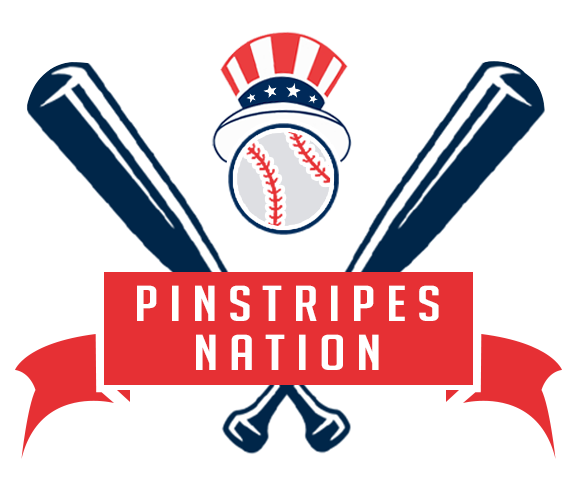Yankees need a solid plan to upturn a crumbling batting lineup


Sara Molnick
More Stories By Sara Molnick
- Mother’s Day: How Anthony Volpe’s mom molded him into a Yankee phenom
- Yankees weighing Alex Bregman pursuit as Juan Soto decision looms
- Aaron Judge named unanimous AL MVP, leads Yankees back to World Series glory
- Rumors point to Gleyber Torres joining AL team, Yankees matchups anticipated
- Juan Soto leaves Yankees’ pitch feeling ‘closer’ to Steinbrenner ahead of free agency showdown
Table of Contents
The Yankees are in a pretty odd and vulnerable position. They went until one step away from the World Series, which was a very important peak. But they fought every day to find stability in the lineup.
During parts of the American League Championship Series, the Yankees were upset about what they thought was good luck for the Astros or at least good breaks they got. After the Astros won Game 4 at Yankee Stadium, 6-5, they won the series 3-0. During the offseason, it is time for the Yankees to introspect. The batting order below Aaron Judge is crumbling too often.
The Yankees’ offense is even less stable after losing the first two games of the ALCS to the Houston Astros. This lineup is in flux, and there are important questions that need to be answered right away — before the series moves to New York on Saturday — and in the tense winter to come. Who else will be able to hit consistently with Aaron Judge now? And would his teammates get better if he stayed with the Yankees during the off-season?
Even in the second half of October, Judge, Giancarlo Stanton, and Anthony Rizzo are making it hard for manager Aaron Boone to find the right people to fill out the lineup. In Game 2, he put the team’s best hitter, Harrison Bader, in the leadoff spot and moved Gleyber Torres, who hit .148 in October, to the fifth spot. Bader and Torres helped the Yankees score runs and get chances to score more, but the lineup change only showed how unstable the bottom half of the lineup still is.
The Yankees’ rally and their attempt to come back were both stopped by strikeouts at the bottom of the order. Josh Donaldson, Kyle Higashioka, and Oswald Peraza, who position 6th, 7th, and 8th for the Yankees, gave the Astros every reason to smile.
Yankees must avoid another August slump
The first evidence of a crumbling Yankees lineup surfaced in August, though it looked temporary then. This took the team off of a record-setting win pace and out of the top spot in the AL playoff race.
The Yankees struggled with injuries more than any other team this season. They faced trouble finding enough healthy and good hitters to keep up. Over the course of 162 games, that summer hiccup didn’t stop them from getting closer to their ultimate goal—they’re still in the ALCS—but it did show some cracks.
Judge’s incredible 62-homer season covered it up but the Yankees were blown out in the ALCS. If you look at how the Yankees’ offense did as a whole in the second half, they look great. By FanGraphs’ park-adjusted metric wRC+, they were eighth in baseball, right between the two teams that were fighting for the NL pennant.
But Judge, who hit 151% better than the average player in the league during that time, was a huge reason for their success. Only three of the 10 Yankees batters who had the most plate appearances in the second half hit better than average. On the other hand, the Padres and Phillies each had eight above-average hitters among their top 10 batters.
When the pitching gets weaker and the game gets harder in October, this kind of imbalance can become a clear and dangerous threat.
Boone, Cashman in a quagmire
Last winter, the Yankees’ general manager, Brian Cashman, had a big question about the left side of the infield. Shortstops Carlos Correa and Corey Seager were available for big money. But Cashman decided to try to build a bridge expecting Anthony Volpe and Oswald Peraza to take over. He went for shortstop Isiah Kiner-Falefa, who is good at defense, and third baseman Josh Donaldson, who is getting older.
When Seager signed a 10-year deal with the Texas Rangers, it was understandable that the Yankees didn’t want to commit to him for that long. However, Cashman’s let Carlos Correa go and the Twins got him with an opt-out clause after one season, which raised more eyebrows in New York. Correa got able support from Gio Urshela, who Cashman sold. There is a big difference between the two realistic choices.
Minnesota gave its duo a total of $41.65 million for their 6.8 FanGraphs WAR over two good seasons. Donaldson and Kiner-Falefa, on the other hand, both had worse batting lines than the league average by the end of the season. The Yankees paid $28.45 million for 2.9 WAR, and they still owe $21.75 million to Donaldson, who will be 37 next year.
Since the Yankees weren’t sure about Kiner-Falefa, they started putting Oswaldo Cabrera at shortstop sometimes because he was a better offensive spark. Then, in September, they called up Peraza, who was thought to be the second-best prospect after Volpe, for his first game. In 18 games, he hit .306 and showed good plate discipline, both of which pointed to a good level of comfort against major-league pitchers. But then the Yankees didn’t put Peraza on the team for the ALDS at all.
He was added to the ALCS team after Aaron Hicks hurt his knee and a change was needed. In Game 2, he was put in the starting lineup. Given how much weight is put on Volpe and Peraza, he should have more chances as a shortstop?
What if Aaron Judge leaves?
Aaron Judge is thinking about his options this offseason. Do the Yankees seem like the team most committed to building a winner around him? It seems like a silly question, and for most of the last 30 years, it has been. But the choices the Yankees have made in recent offseasons feel like a shift, if not a full-on retreat.
After using their muscle to get Giancarlo Stanton and Gerrit Cole, they spent money to keep DJ LeMahieu. But Stanton and LeMahieu are getting older and have been hurt and the Yankees need to focus on the young blood rather than expecting veterans to run the show with injury spells.
In 2022, they had the oldest crop of position players in all of baseball. This isn’t always a bad thing, though. Just ask the 2021 San Francisco Giants. But the other side of that coin can show up quickly. Just ask the San Francisco Giants of 2022.
Teams with similar payrolls and goals, such as the Los Angeles Dodgers, Atlanta Braves, and Astros, have put more money into younger position players who seem to be more durable than the Yankees do right now. Stanton is under contract until at least 2027, and LeMahieu is signed until 2026. Anthony Rizzo has a contract that keeps him there until at least 2023. The only important hitters under 30 are Torres and Bader. Torres will be in New York until 2024 while Bader will be free to sign with any team after 2023.
The fact that there haven’t been many position player development wins makes the team lean toward veterans and also puts a lot of pressure on the team to change the pattern.
The Yankees have been very good at finding and developing pitchers, but the teams they compete with financially and try to beat on the field have been better at filling their rosters with good young hitters in recent years. Cashman and his team are sure that they are about to show some of their own to the baseball world. But does Judge, whose worth they talked about in public in the spring, believe in the future they’re selling? And are they willing to pay to show him how serious they are?
Considering what happened in 2022, it’s easy to see why the promises might look as empty as the bottom of the batting order. As Boone and Cashman are set to be back, they must have a solid plan to upturn the crumbling Yankees lineup.
What do you think? Leave a comment below.


 Follow Us
Follow Us









